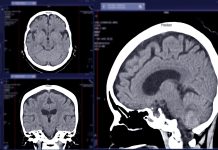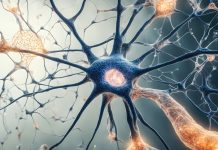Researchers from the University of Zurich have developed an AI-driven gene editing method that improves DNA repair predictions, enabling more accurate and safer genome modifications
Scientists at the University of Zurich have developed an advanced AI tool, named Pythia, that significantly boosts the precision of CRISPR gene editing. By accurately predicting how DNA will repair itself after being cut, Pythia addresses one of the biggest challenges in genome modification. This breakthrough could lead to safer, more effective treatments for a range of genetic disorders and neurological diseases, marking a significant step forward in next-generation gene therapy.
Precision gene editing using AI
Scientists from the University of Zurich (UZH), Ghent University in Belgium, and the ETH Zurich have developed a new method that significantly improves the precision of gene editing.
The researchers used an AI tool called Pythia that predicts how cells repair their DNA after it is cut by gene editing tools such as CRISPR.
“Our team developed tiny DNA repair templates, which act like molecular glue and guide the cell to make precise genetic changes”, said lead author Thomas Naert, who pioneered the technology at the UZH and is currently a post-doc at Gent University.
These AI templates were first tested in human cell cultures, which enabled the team to conduct highly accurate gene edits and integrations. The approach was also validated in other organisms, including Xenopus, a small tropical frog used in biomedical research, and in living mice, where the researchers successfully edited DNA in brain cells.
“DNA repair follows patterns; it is not random. And Pythia uses these patterns to our advantage,” commented Naert. Traditionally, when CRISPR cuts DNA, scientists rely on the cell’s natural repair mechanisms to fix the break. While these repairs follow predictable patterns, they can result in unwanted outcomes, such as the destruction of the surrounding genes. “What we modeled at a massive scale is that this DNA repair process obeys consistent rules that AI can learn and predict,” added Naert. With this knowledge, the researchers simulated millions of possible editing outcomes using machine learning, asking a simple but powerful question: What is the most efficient way to make a specific small change to the genome, given how the cell is likely to repair itself?
In addition to changing individual letters of the genetic code or integrating an exogenously delivered gene, the method can also be used to label specific proteins fluorescently. “That is incredibly powerful,” says Naert, “because it allows us to directly observe what individual proteins are doing in healthy and diseased tissue.” Another advantage of the new method is that it works well in all cells – even in organs with no cell division, such as the brain.
AI-powered Pythia transforms genetic therapies with precise outcome predictions
Pythia allows scientists to forecast the outcomes of gene editing with remarkable precision.
“Just as meteorologists use AI to predict the weather, we are using it to forecast how cells will respond to genetic interventions. That kind of predictive power is essential if we want gene editing to be safe, reliable, and clinically useful,” said Soeren Lienkamp, professor at the Institute of Anatomy of UZH and the ETH Zurich and senior author of the study.
“What excites us most is not only the technology itself, but also the possibilities it opens. Pythia brings together large-scale AI prediction with real biological systems. From cultured cells to whole animals, this tight loop between modeling and experimentation points is becoming increasingly useful, for example, in precise gene therapies”, Lienkamp added. This work creates new possibilities for understanding genetic disease and developing gene therapies, as well as for neurological diseases, that are both safer and more effective.








